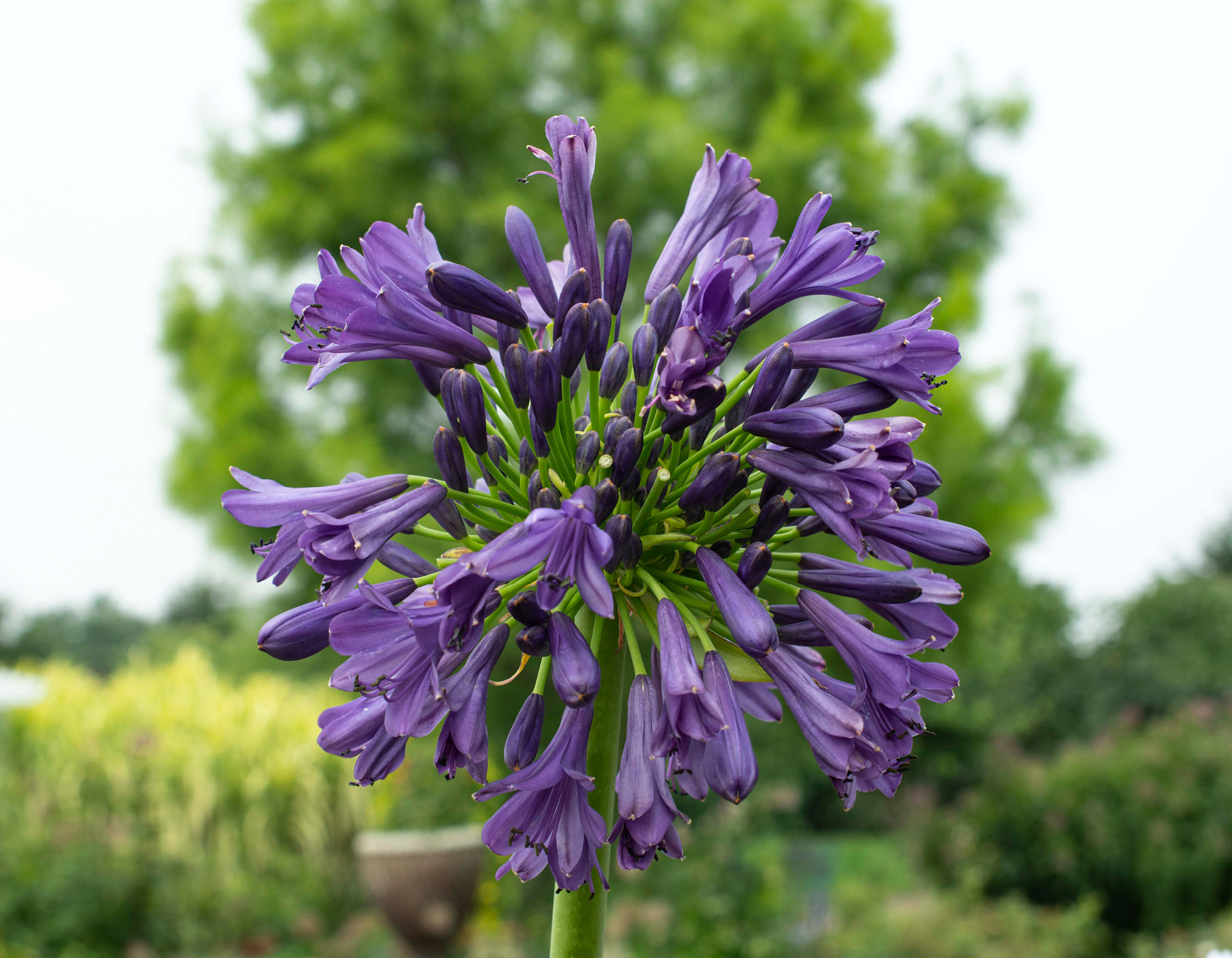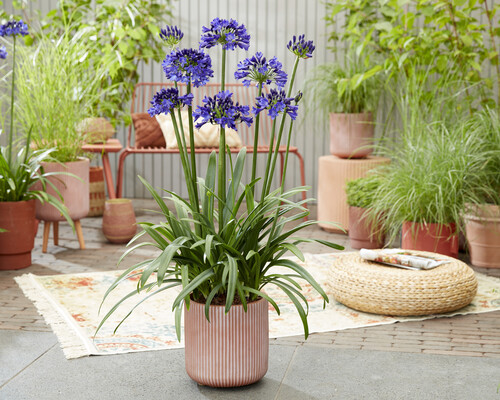Unleashing the Secret to Effective Agapanthus Cultivation: Advice for a Flourishing Yard
In the realm of gardening, growing agapanthus successfully calls for a strategic strategy that encompasses numerous elements of plant care. By comprehending the nuances of agapanthus cultivation, one can develop an atmosphere where these plants flourish and flower perfectly.
Growing Agapanthus: Best Practices
When planting Agapanthus, proper dirt preparation is vital for making certain successful growth and development of these stunning blossoms. Agapanthus, typically known as Lily of the Nile or African lily, flourishes in well-draining soil with a slightly acidic to neutral pH level - Agapanthus. Prior to planting, it is critical to change hefty clay soils with natural matter such as compost or peat moss to boost drainage and supply crucial nutrients for the plants
To grow Agapanthus, choose a location that receives full sunlight to partial color, as this will promote healthy growth and abundant blooming. Dig an opening two times the diameter of the plant's origin sphere and position the Agapanthus at the very same depth it was formerly expanding. Gently backfill the opening with dirt, pushing down securely to eliminate any air pockets around the roots.
Water the freshly planted Agapanthus extensively and remain to keep the dirt evenly moist, particularly throughout the plant's energetic growing season. Agapanthus. Using a well balanced fertilizer once a month can even more sustain the plant's development and flowering. By complying with these best techniques for growing Agapanthus, you can create a magnificent display screen of these captivating blossoms in your garden
Ideal Dirt Issues for Agapanthus
For ideal development and flowering success of Agapanthus plants, making certain the soil problems are suitable is critical. Agapanthus prospers in well-draining dirt with a somewhat acidic to neutral pH degree ranging from 6.0 to 7.0. This type of dirt permits ample water drainage, stopping waterlogging which can cause root rot. To improve dirt drainage, take into consideration including organic issue such as compost or peat moss when preparing the planting website. In addition, Agapanthus chooses dirt that is rich in nutrients, so including a balanced fertilizer throughout the expanding season can advertise healthy development and vibrant flowers.

Watering and Fertilizing Tips
To guarantee healthy and balanced development and dynamic blooms, correct watering and feeding techniques are crucial for effective Agapanthus farming. Agapanthus plants take advantage of normal watering, especially during the growing period. It is suggested to water deeply as soon as a week, ensuring the soil is moist however not soaked. During heat or in pots, more constant watering may be necessary to protect against the soil from drying completely.
When it involves feeding Agapanthus, a well balanced fertilizer with equivalent components nitrogen, phosphorus, and potassium can be used in the spring to promote healthy growth and flowering. Slow-release fertilizers are excellent for providing nutrients progressively over a prolonged period. Stay you could try here clear of over-fertilizing, as this can cause too much vegetation growth at the expense of flowers.
In addition, including organic issue like compost into the soil can boost nutrient levels and enhance soil structure, assisting in the overall wellness of the Agapanthus plants. By adhering to these watering and fertilizing suggestions, gardeners can ensure their Agapanthus plants thrive and generate magnificent screens of blossoms.
Pruning and Deadheading Methods
Appropriate pruning and deadheading strategies play a vital duty in maintaining the wellness and aesthetics of Agapanthus plants, complementing the vital methods of watering and fertilizing for successful growing. Pruning Agapanthus involves removing spent flower heads, yellowing or dead fallen leaves, and general shaping of the plant to promote better development. Deadheading, the procedure of eliminating faded flowers, not just enhances the plant's appearance however additionally urges additional flowering.
When deadheading Agapanthus, it is a good idea to trim off the flower stem at the base using sharp, clean shears. This process redirects the plant's energy from seed production back right into origin and vegetation growth, promoting a much healthier and extra durable plant. Routine deadheading can prolong the growing duration of Agapanthus moved here and stop self-seeding, which can lead to congestion.
In regards to pruning, Agapanthus typically advantages from a light trim after flowering to clean up the plant and urge fresh development. Cutting down the spent flower stems and eliminating any type of dead or damaged vegetation assists maintain the plant's vigor and total look. Nevertheless, it is vital to stay clear of cutting right into the crown of the plant, as this can compromise its health and wellness.

Protecting Agapanthus From Vermins and Diseases
Carrying out efficient pest and condition management techniques is critical to securing the health and wellness and vitality of Agapanthus plants in farming. One typical bug that affects Agapanthus is the Agapanthus borer, a caterpillar that passages into the plant, causing damage to the blossoms and fallen leaves.
Along with bugs, Agapanthus are vulnerable to diseases such as origin rot and fungal leaf spots. These concerns can commonly be prevented by guaranteeing appropriate drain and avoiding overwatering. Affected parts of the plant need to be promptly eliminated to avoid further spread if indications of condition show up. Fungicides may additionally be used as a treatment step, complying with the manufacturer's directions carefully. By staying vigilant and addressing parasite and condition problems quickly, gardeners can help their Agapanthus thrive and thrive.

Conclusion
To conclude, successful farming of agapanthus requires appropriate growing techniques, optimal dirt problems, adequate watering and feeding, regular pruning and deadheading, and protection from insects and conditions. By complying with these methods and suggestions, garden enthusiasts can make certain a growing yard filled up with attractive agapanthus flowers. Agapanthus. Bear in mind to keep regular care and focus to detail to advertise the health and durability of these sensational plants
When planting Agapanthus, proper soil prep work is go to my blog necessary for ensuring effective development and advancement of these lovely flowers.Water the newly planted Agapanthus completely and continue to keep the dirt uniformly wet, particularly throughout the plant's active growing period.For ideal growth and growing success of Agapanthus plants, making sure the soil problems are optimal is important. When transplanting or planting Agapanthus, ensure the soil is well-prepared to supply the necessary foundation for the plants to establish themselves effectively. One usual insect that affects Agapanthus is the Agapanthus borer, a caterpillar that passages into the plant, triggering damages to the fallen leaves and flowers.